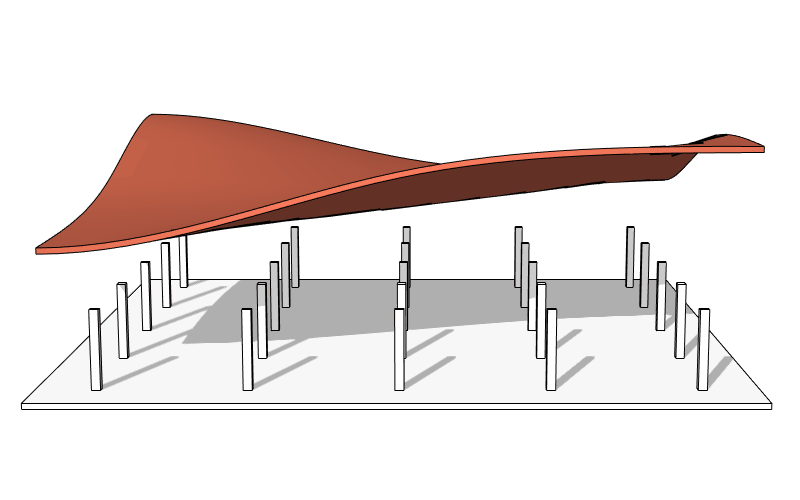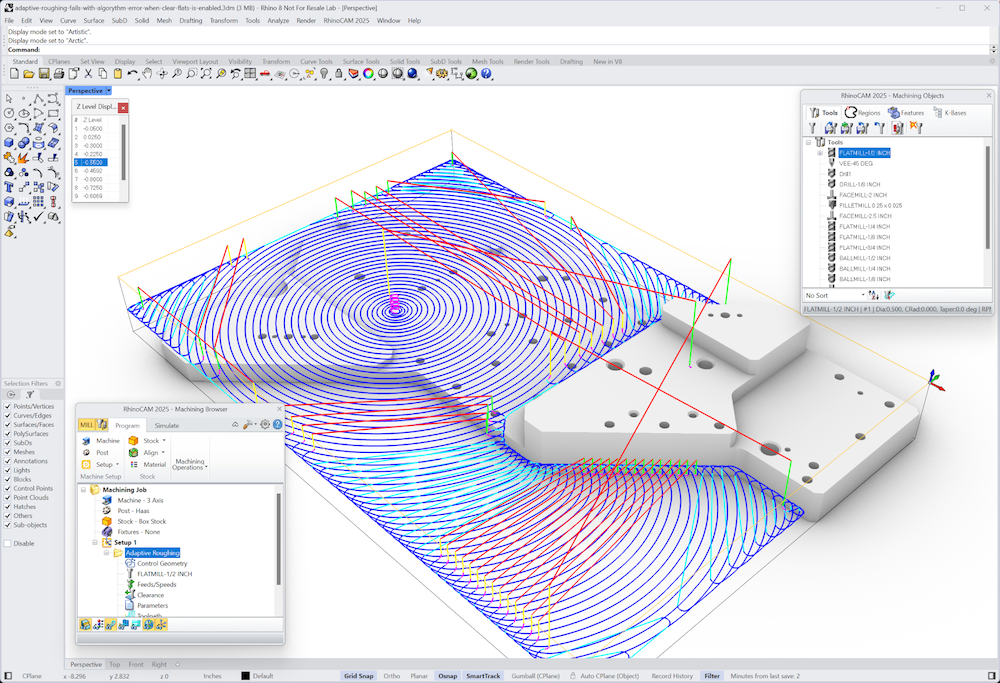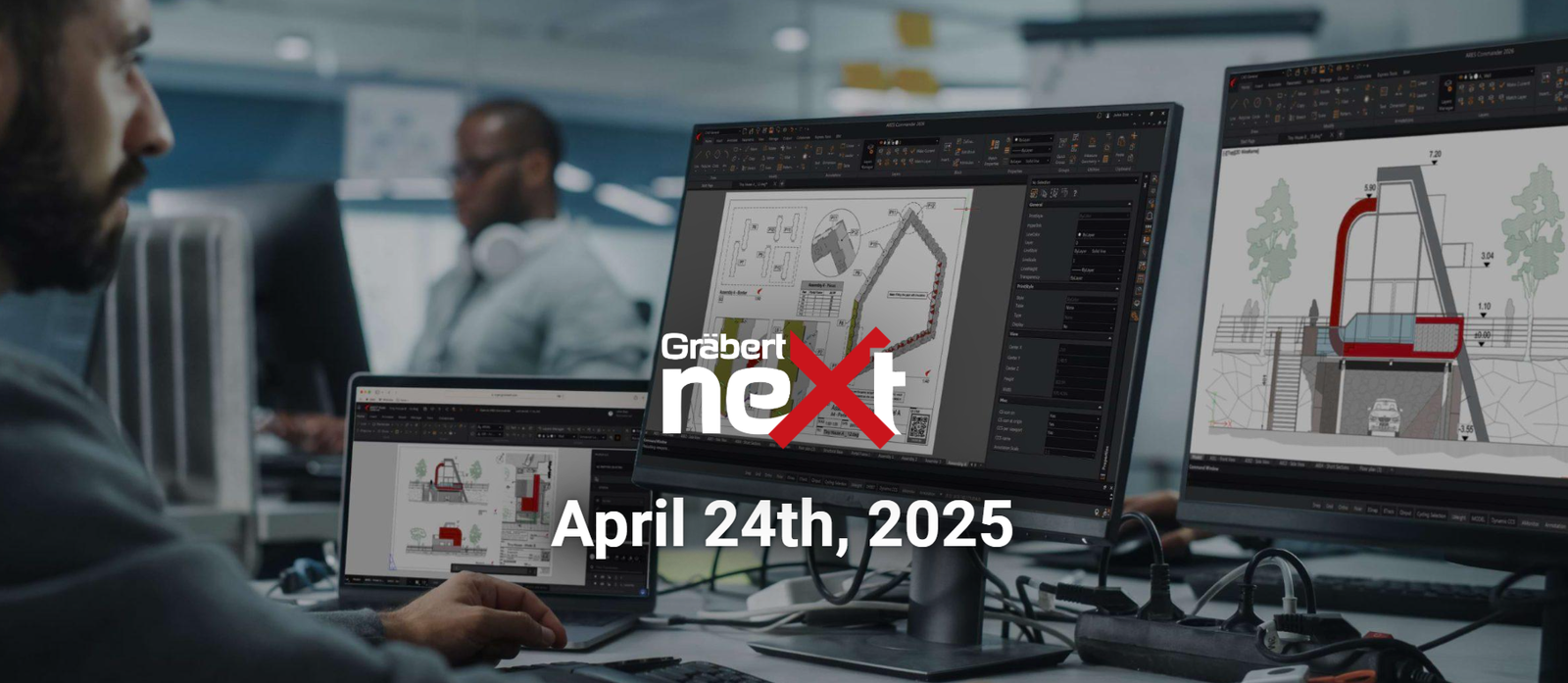Your Cart is Empty
Customer Testimonials
-
"Great customer service. The folks at Novedge were super helpful in navigating a somewhat complicated order including software upgrades and serial numbers in various stages of inactivity. They were friendly and helpful throughout the process.."
Ruben Ruckmark
"Quick & very helpful. We have been using Novedge for years and are very happy with their quick service when we need to make a purchase and excellent support resolving any issues."
Will Woodson
"Scott is the best. He reminds me about subscriptions dates, guides me in the correct direction for updates. He always responds promptly to me. He is literally the reason I continue to work with Novedge and will do so in the future."
Edward Mchugh
"Calvin Lok is “the man”. After my purchase of Sketchup 2021, he called me and provided step-by-step instructions to ease me through difficulties I was having with the setup of my new software."
Mike Borzage
An Interview with Dan Ablan, 3D Guru and Writer
June 11, 2007 5 min read

Daniel Ablan is a well known 3D computer graphics expert and writer. He is the author of several books about Newtek LightWave, Luxology Modo, and digital photography and cinematography. Dan heads two businesses: AGA Digital Studios, a professional services and training company, and 3DGarage.com, which produces and sells training DVDs. Knowing Dan through Novedge, I couldn't resist asking him a few questions about his professional activities and the future of 3D computer graphics. Here is the interview.
Daniel can you tell us a bit about yourself and your professional activities?
I've been working in the creative arts since the late 1980's
I've been working in the creative arts since college in the late 1980's. I originally started out as a photojournalism major, but ended up minoring in that and majoring in broadcast journalism. In 1989, I was introduced to a Video Toaster from NewTek, and LightWave 3D. I loved it. I began emerging myself into 3D and in 1994, began working full time for myself. It's now 14 years later, and AGA Digital Studios, Inc. creates 3D animations for major corporate and industrial clients. We've also branched off into a comprehensive training division, 3D Garage.com, in 2003. 2007 and beyond will see more 3D animations and even more 3D Garage training videos.
You have been in the 3D computer graphics and DCC (Digital Content Creation) since the Amiga time. In all those years what was the most unexpected evolution that you would never have envisioned? On the other hand, what aspect of technology didn't reach the level of your expectations?
today, you can render entire animations in 10 minutes on computers that cost less than $1,000
I think overall, the progression of technology has been surprising. It wasn't too long ago that burning your own CDs was extremely costly and problematic. Today, anyone can buy a computer, burn their own CDs as well as DVDs. Beyond that, the advancement of OpenGL technology has been amazing, alongside the speed and power increases of the desktop computer.
In my first few years of 3D, rendering a full broadcast resolution frame with just hard shadows, no reflections, refraction or complex bump maps took 10 minutes a frame or more. Today, you can render entire animations in 10 minutes on computers that cost less than $1000. I'm surprised that real time rendering has not become more available however. It seems that as fast as computing technology progresses, software makers find more advanced techniques to test the boundaries of our systems.
The continuous increase of power available on our desktop computers is making possible new approaches to rendering based on the simulation of light (e.g. Maxwell Render and fryrender). What do you think of these new tools? Do you believe that the quality of results justifies the time required to generate a single image?
I'd have to say yes. Think about it – could we even consider rendering a full animation with global illumination just a few years ago? The realism we can achieve with a little extra time is astounding. I'm all for it.
Every day, people excited about some beautiful rendering image come to Novedge asking for the best software tool for modeling and rendering. How would you recommend selecting a 3D system for someone that is approaching it for the first time?
the simplest, cheapest processor is more than fine for anyone starting out in 3D. The key is RAM
People over due it with processors. The simplest, cheapest processor is more than fine for anyone starting out in 3D. The key is RAM. Most people never put enough RAM into their system, opting to "upgrade later" and sell out to the salesman pitching the latest from Intel or AMD. I've always told people to get a decent system with as much memory as they can afford, 2Gigs, 4Gigs, or more better 16Gigs! From there, the video card is crucial. The advent of PC gaming in the 1990's has helped all 3D animators by bringing cheaper and faster video cards to the market. That of course has bled over to Mac as well. Just about any ATIor nVidia 256 MB card will be more than fine for someone starting out in 3D – and beyond.
Can you tell how you collect and organize all the material for a new book or a new training video?
Generally, it's in my head. I start the project and take notes along the way. Lately however, with so much going on, I tend to make lists. I've got a note taking program I use on my MacBook Pro where I keep ideas, project lists, and so on for new training videos and book content.
Many of the technologies powering today's DCC systems are considered mature. In what areas can and should those technologies improve in order to fully empower the end-user?
Well, like anything technology related, I guess it would come down to: faster, better, cheaper!
You produced training material in the form of books and videos. Are you working on any new training? When do you recommend a book and when video training?
Books vs. Videos: that's really up to the user on how they like to learn
Yes. There's lots in the works. I have a few major animation projects going on right now, so I can't add to the training library until July. Books vs. Videos – that's really up to the user on how they like to learn. I like books because I can get away from the computer, read up on the software, then go try it out. Also, videos are often just a demo of the software. Many people "know" their software, they just can't teach it. A book usually has multiple editors who scrutinize over content, flow, and so on. Both are good mediums, and each has their place.
Do you think that new technologies like the one used by Luxology Modo (Polygon/Subdivision Surface Modeler) could ever replace the more "traditional" geometric modeling used by all mechanical design tools?
Replace? Who knows. But, if you take a look at the CAD programs of today, they're not adding more design tools, as much as they are more ways to light and render. That's the next step for anyone building 3D models – so it would make sense that companies employ Luxology's modo and it's excellent render engine to generate imagery. Time will tell!
I would like to thank Dan Ablan for speaking with me today. If you have any questions for Dan or for Novedge, please leave a comment below and we will be glad to answer.
Franco Folini
Also in NOVEDGE Blog

Enhance Your Designs with VisualARQ 3: Effortless Geometry Extensions for Walls and Columns
April 30, 2025 8 min read
Read More
MecSoft Unveils RhinoCAM 2025 and VisualCAD/CAM 2025 with Enhanced Features
March 08, 2025 5 min read
Read MoreSubscribe
Sign up to get the latest on sales, new releases and more …



